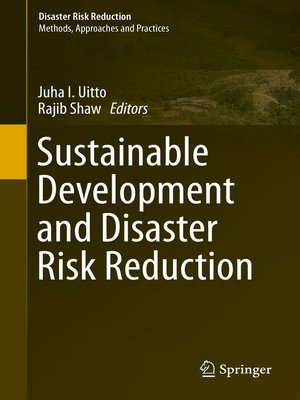Sustainable Development and Disaster Risk Reduction
ebook ∣ Disaster Risk Reduction
By Juha I. Uitto

Sign up to save your library
With an OverDrive account, you can save your favorite libraries for at-a-glance information about availability. Find out more about OverDrive accounts.
Find this title in Libby, the library reading app by OverDrive.



Search for a digital library with this title
Title found at these libraries:
| Library Name | Distance |
|---|---|
| Loading... |
This book focuses on exploring the linkages between natural disasters and sustainable development at the global, regional, and national levels. Disasters and development are closely related, yet the disciplinary silos prevail and there is little communication and cooperation between the disaster management, environment, and development communities. One catastrophic event, such as an earthquake, tsunami, or cyclone, can destroy infrastructure, people's lives and livelihoods, and set back development. Similarly, slow onset disasters—often associated with global climate change—pose threats to development, livelihoods, food security, and long-term sustainable development. This book is uniquely aimed at bridging the gaps between the environmental, development, and disaster management communities. It traces the evolution of concepts and practice and highlights the linkages between natural disasters and sustainable development in key sectors, including food security, health, and water. Thebook includes case studies from the field highlighting the complex issues that challenge sustainable development and disaster risk management in practice. It draws policy conclusions for the global community based on state-of-the art knowledge from research and practice.
The primary target groups for the book are researchers, including graduate students, in the fields of environment and sustainable development, geography, disaster risk reduction, and climate change studies. The second target group comprises practitioners and policymakers working in national and international organizations, the private sector, and civil society.







